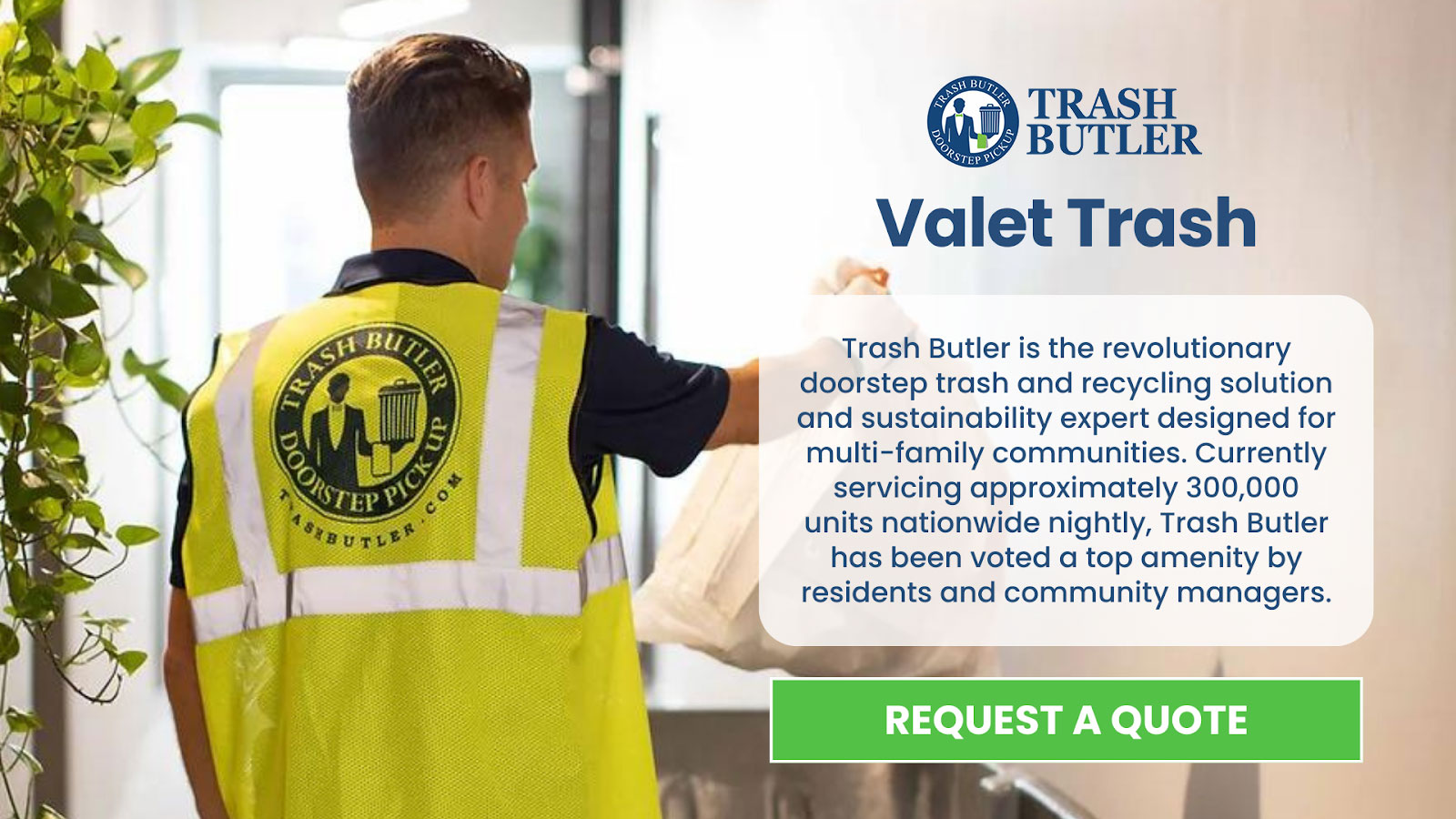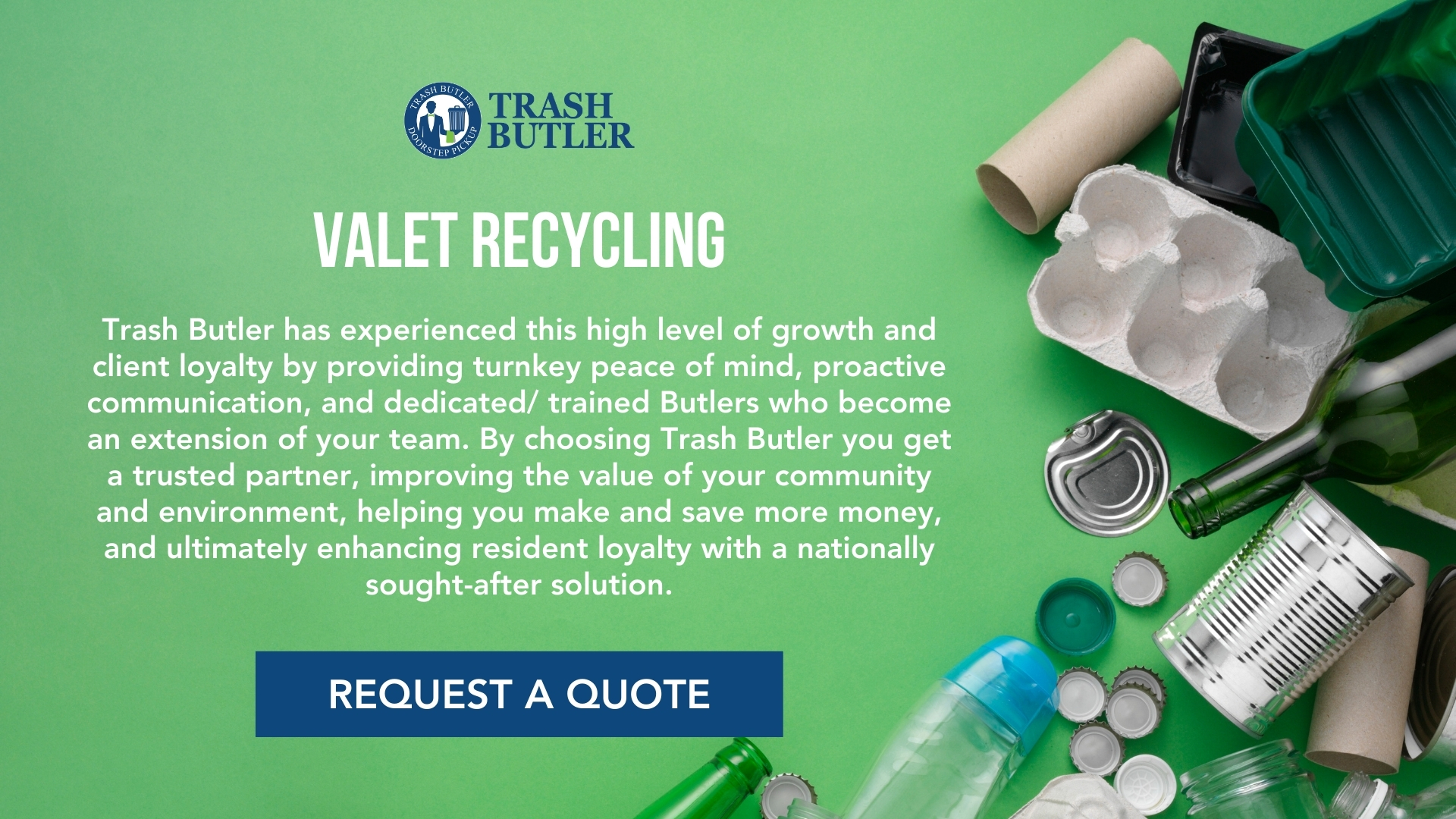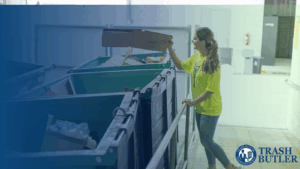Key Takeaways:
- Focus on Tenant Satisfaction: Prioritize tenant happiness through open communication and prompt maintenance to boost lease renewals and reduce turnover costs.
- Understand Financial Implications: Recognize that high tenant turnover can lead to significant financial losses, including advertising, vacancy costs, and turnover expenses.
- Create a Sense of Community: Foster connections among tenants through social events and community spaces to enhance their living experience and increase retention rates.
As a property manager or landlord, you know that attracting new tenants is only half the battle. Retaining them is where the real value lies. High tenant turnover can drain your resources, disrupt your community, and hurt your bottom line. When tenants are happy and feel valued, they’re far more likely to renew their leases, leading to lower vacancy rates and increased profitability.
In this article, we’ll explore why tenant retention is not just beneficial for your business but essential for creating a thriving rental community. You’ll discover practical, actionable tips to satisfy your tenants, from fostering open communication to enhancing property amenities. By implementing these strategies, you’ll reduce turnover costs and build lasting relationships with your tenants, creating a sense of belonging that encourages them to stay longer.
The Financial Impact Of Tenant Retention On Your Rental Business
Tenant turnover can have a significant financial impact on rental businesses. Here are some of the key costs associated with finding and onboarding new tenants:
- Advertising and Marketing Expenses: Promoting vacant units through various channels can be costly.
- Screening and Application Fees: Processing tenant applications and conducting background checks involves time and resources.
- Vacancy Costs: Lost rental income during vacancy periods can significantly impact profitability.
- Turnover Costs: Expenses related to preparing the unit for a new tenant, such as cleaning, repairs, and painting, can add up.
The Benefits of Tenant Retention
Retaining existing tenants offers numerous financial advantages:
- Increased Revenue: Long-term tenants are more likely to renew their leases at or above market rates, contributing to consistent rental income.
- Reduced Costs: Avoiding the expenses associated with tenant turnover can lead to substantial cost savings.
- Enhanced Property Value: A property with a high tenant retention rate is generally more attractive to potential buyers, increasing its value.
- Improved Cash Flow: Consistent rental income can provide a stable cash flow, making it easier to manage expenses and invest in property improvements.
Quantifying the Financial Impact
To understand the financial impact of tenant retention, consider the following example:
- Scenario: A rental property generates $1,000 per month in rent.
- Vacancy Period: A vacancy period of two months due to tenant turnover results in a loss of $2,000 in rental income.
- Turnover Costs: Additional costs associated with the turnover, such as advertising and cleaning, amount to $500.
- Total Loss: The total financial loss due to tenant turnover in this scenario is $2,500.
Landlords can avoid these losses by retaining tenants, reducing turnover, and improving their financial performance.
Why Tenant Satisfaction Directly Influences Retention Rates
Tenant satisfaction is crucial in determining whether tenants will choose to renew their leases. Satisfied tenants are likelier to remain in their rental units, while dissatisfied tenants may seek alternative housing options. Here’s a breakdown of why tenant satisfaction directly influences retention rates:
Positive Word-of-Mouth:
- Referrals: Satisfied tenants are more likely to recommend your property to friends and family, attracting new tenants.
- Online Reviews: Positive reviews can enhance your property’s reputation and attract potential tenants.
Decreased Turnover Costs:
- Reduced Vacancy Periods: Satisfied tenants are less likely to move out, reducing the time your unit sits vacant.
- Lower Turnover Expenses: Fewer turnovers mean lower costs associated with advertising, screening, and preparing units for new tenants.
Increased Rent Renewals:
- Higher Renewal Rates: Satisfied tenants are more likely to renew their leases, ensuring a steady rental income stream.
- Potential Rent Increases: Long-term tenants who are satisfied with their living experience may be more willing to accept rent increases.
Reduced Maintenance Issues:
- Better Tenant Care: Satisfied tenants are more likely to take care of their rental unit, reducing the need for maintenance repairs.
- Fewer Damage Claims: A positive tenant-landlord relationship can minimize damage claims and disputes.
Improved Property Value:
- Desirable Rental Property: A property with a high tenant satisfaction rate is more attractive to potential buyers.
- Increased Property Value: A well-maintained property with satisfied tenants can command a higher market value.
Reduced Tenant Stress:
- Positive Living Environment: Satisfied tenants experience less stress and are more likely to enjoy their living situation.
- Improved Well-being: A positive rental experience can contribute to the overall well-being of tenants.
Common Reasons Tenants Choose To Leave: A Property Manager’s Perspective
Below, we delve into the common reasons tenants decide to move on and how a proactive approach can mitigate these issues.
Lack of Communication and Responsiveness
Tenants value open lines of communication with their property managers. When concerns, maintenance requests, or emergencies are met with silence or delayed responses, frustration builds, leading to dissatisfaction. Effective communication is key to making tenants feel heard and valued, fostering a sense of community and belonging.
Poor Maintenance and Upkeep
One of the primary reasons tenants consider leaving is the property’s condition. Regular maintenance and timely repairs are fundamental to tenant satisfaction. Neglected facilities pose safety and health risks and signal to tenants that management does not prioritize their comfort and well-being.
Inadequate Amenities
Today’s tenants seek more than just a place to live; they seek communities that offer convenience, luxury, and lifestyle amenities that match their personal and environmental values. The absence of modern, sustainable amenities can make a property seem outdated and less appealing compared to competitors that offer more attractive features.
Rental Price Concerns
While market fluctuations often dictate rental prices, significant or unjustified increases can lead to tenant turnover. Transparency about future rent adjustments and providing context can help mitigate negative reactions. Offering value through quality services and amenities can also justify the perceived value of the rent, aligning cost with the tenant’s quality of life.
Community Dynamics
The atmosphere and dynamics of the apartment community itself play a significant role in a tenant’s decision to stay. A sense of safety, community, and belonging can greatly enhance tenant retention. Conversely, noise complaints, conflicts between residents, or lack of privacy can detract from the living experience.
Effective Communication Strategies To Improve Tenant Retention
Retaining tenants cut down on the costs associated with turnover, maintain a stable community atmosphere, and enhance revenue by preserving occupancy rates. One of the key underpinnings of successful tenant retention is effective communication. Here are some strategies that can help improve tenant retention through better communication practices:
Create Open Channels of Communication
Establish open, accessible channels of communication to ensure tenants know they are heard and valued. This might include a dedicated email address, a reliable telephone number, or a resident portal where they can report issues, make requests, and provide feedback at any time of day. Accessibility is crucial and reassures tenants that management is responsive to their needs.
Leverage Technology for Regular Updates
Utilize technology like email newsletters, SMS alerts, or community apps to send regular updates to your tenants. Communicate about upcoming maintenance, community events, or any changes they might expect around the premises. This not only keeps tenants informed but also cultivates a sense of community and belonging.
Implement a Proactive Approach to Maintenance and Concerns
Proactive communication about maintenance and addressing concerns before they become problematic exhibits a commitment to tenants’ well-being and comfort. This includes following up on completed service requests to ensure the issue is resolved to the tenant’s satisfaction. Remember, a satisfied tenant is more likely to renew their lease.
Personalize Communication
While it’s important to communicate efficiently, personalizing interactions can significantly boost tenant satisfaction. Personal touches, such as acknowledging birthdays, celebrating community milestones, or even responding personally to feedback, make tenants feel valued and appreciated, fostering loyal community members.
Encourage Feedback and Act on It
Actively seek out feedback from tenants about their living experience and any improvements they might suggest. More importantly, act on this feedback to show that you value their input and are committed to making tangible improvements. This fosters a sense of partnership and trust between tenants and management.
Maintenance Matters: How Upkeep Affects Tenant Happiness And Retention
The state of your rental property plays a critical role in tenant satisfaction and, consequently, retention rates. Well-maintained apartments create a positive living environment and foster a sense of pride among tenants. Understanding the connection between maintenance, tenant happiness, and retention is vital for landlords and property managers looking to cultivate long-term relationships with their renters.
First Impressions Count
The initial impression tenants have when they move in—or even when they visit for a showing—can significantly influence their overall satisfaction. A clean, well-maintained, and aesthetically pleasing property communicates that you care about the living conditions. This attention to detail can set the tone for their entire residency. Conversely, neglected maintenance can lead to dissatisfaction, pushing tenants to consider moving elsewhere.
Safety and Comfort
Maintenance isn’t just about aesthetics; it’s also about safety. Tenants must feel secure in their homes, and this includes functioning smoke detectors, secure locks, and well-maintained common areas. When tenants believe their safety is prioritized, they are more likely to feel comfortable and satisfied. Regular maintenance checks and prompt repairs show tenants that their safety and comfort are your top priorities, increasing their likelihood of lease renewal.
Timely Repairs Build Trust
One of the most critical aspects of tenant satisfaction is property management’s responsiveness to maintenance requests. Tenants expect timely repairs when issues arise, whether it’s a leaking faucet or a broken heater. Addressing maintenance requests quickly and efficiently builds trust and shows tenants that you value their comfort. This proactive approach enhances tenant happiness and significantly impacts their decision to stay long-term.
Preventative Maintenance Reduces Major Issues
Implementing a routine preventative maintenance schedule can mitigate the risk of larger, more costly problems. Regular inspections can catch minor issues before they escalate, ensuring your property remains in top condition. This helps keep tenants happy and protects your investment, reducing turnover costs and maintaining a steady income stream.
Creating a Positive Community Experience
Well-maintained common areas, such as lobbies, hallways, and outdoor spaces, contribute to a positive community atmosphere. When tenants enjoy their surroundings, they are more likely to develop a sense of community and belonging. This fosters stronger relationships among tenants and increases satisfaction, making them less likely to move away.
Creating A Sense Of Community: Fostering Connections Among Tenants
A strong sense of community can significantly enhance tenant satisfaction and retention. By fostering connections among tenants, landlords can create a welcoming and supportive living environment that encourages long-term tenancy. Here are some strategies to create a sense of community:
Organize Community Events:
- Social Gatherings: Host social events such as potlucks, game nights, or holiday parties.
- Community Activities: Organize community service projects or volunteer opportunities.
- Tenant Appreciation Events: Show your appreciation for tenants with special events or gifts.
Create Community Spaces:
- Common Areas: Designate common areas for tenants to socialize and relax, such as courtyards, lounges, or rooftop terraces.
- Community Gardens: Consider creating a community garden for tenants to cultivate their plants.
Encourage Tenant Engagement:
- Tenant Associations: Support the formation of tenant associations to address common concerns and organize community activities.
- Communication Channels: Provide channels for tenants to communicate with each other, such as online forums or bulletin boards.
Promote Neighborliness:
- Introduce New Tenants: Facilitate introductions between new and existing tenants to help them feel welcome.
- Encourage Neighborly Behavior: Promote respectful and friendly interactions among tenants.
Address Community Concerns:
- Listen to Feedback: Actively listen to tenant feedback and address their concerns promptly.
- Involve Tenants in Decision-Making: Consider involving tenants in decision-making processes related to property improvements or community initiatives.
Celebrate Diversity:
- Inclusive Events: Organize events that celebrate diversity and promote understanding among tenants from different backgrounds.
- Cultural Awareness: Encourage tenants to share their cultures and traditions.
Incentives That Work: Motivating Tenants To Renew Their Leases
Offering incentives can be an effective way to motivate tenants to renew their leases. By providing additional benefits or perks, landlords can demonstrate their commitment to tenant satisfaction and encourage long-term tenancy. Here are some incentives that may work:
Financial Incentives:
- Rent Discounts: Offer a discount on rent for renewing tenants.
- Lease Renewal Bonuses: Provide a one-time bonus to tenants who renew their leases.
- Waived Fees: Waive or reduce fees for renewals, such as application fees or security deposits.
Property Upgrades:
- Renovations: Offer to renovate the tenant’s unit or make specific upgrades.
- New Appliances: Replace outdated appliances with newer models.
- Improved Amenities: Enhance common area amenities or add new features.
Flexible Lease Terms:
- Extended Leases: Offer extended lease terms in exchange for a discounted rental rate.
- Early Renewal Discounts: Provide incentives for tenants who renew their leases early.
- Month-to-Month Options: Consider offering month-to-month leases for tenants who prefer flexibility.
Loyalty Programs:
- Rewards Points: Implement a loyalty program that rewards tenants for long-term tenancy with points that can be redeemed for discounts or perks.
- Exclusive Offers: Offer exclusive discounts or promotions to loyal tenants.
Personalized Incentives:
- Tailored Offers: Consider offering incentives tailored to each tenant’s individual needs and preferences.
- Tenant Surveys: Conduct surveys to gather feedback and identify potential incentives most appealing to your tenants.
Exceptional Service:
- Responsive Maintenance: Ensure that maintenance requests are addressed promptly and professionally.
- Personalized Attention: Provide personalized attention and service to your tenants.
- Transparent Communication: Maintain open and transparent communication with tenants.
Measuring Success: Key Metrics To Track Tenant Retention Rates
Understanding and improving tenant retention requires a detailed look at various metrics that can offer valuable insights into why residents choose to stay or leave. For multi-family apartment communities looking to enhance tenant satisfaction and bolster retention rates, the following key metrics should be consistently tracked and analyzed:
Lease Renewal Rate
The lease renewal rate, the percentage of tenants who choose to renew their lease at the end of their term, directly indicates tenant satisfaction and retention. A higher renewal rate suggests tenants are happy with their living conditions and the community. It’s essential to compare this rate over different periods to identify trends and the impact of any changes made to improve tenant retention.
Average Tenancy Duration
This metric indicates the average length of time tenants reside in the community. Longer tenancy durations typically signal higher tenant satisfaction, as residents are less inclined to move if they are content with their living situation. Tracking this metric can help property managers understand the long-term value of tenant retention initiatives.
Occupancy Rate
While occupancy rates are often viewed through the lens of capacity, they also reflect the effectiveness of tenant retention strategies. High occupancy rates can result from successful tenant retention efforts and effective marketing to new tenants. Analyzing how occupancy rates change in response to specific retention strategies provides insight into what works and what doesn’t.
Tenant Satisfaction Scores
It is critical to regularly gather tenant feedback through surveys or other means and quantify this feedback into satisfaction scores. These scores can reveal tenant attitudes toward various aspects of the living experience, including maintenance, amenities, and community events. By correlating these scores with retention rates, property managers can identify which factors most strongly influence the decision to stay.
Cost of Tenant Turnover
Although not a direct measure of tenant retention, understanding the cost associated with tenant turnover can motivate efforts to improve retention. Costs include lost rent, marketing for new tenants, and refurbishing apartments. By reducing turnover, communities save on these costs and foster a more stable and satisfied tenant base.
Final Thoughts
Tenant retention is a critical component of maintaining a successful and thriving multi-family apartment community. The benefits of keeping tenants happy are manifold, including reduced turnover rates, lower vacancy costs, and a formidable, positive community reputation. Implementing key strategies to boost tenant satisfaction, such as timely communication, maintaining high property maintenance standards, and offering valued amenities, can significantly impact tenant retention rates.
At Trash Butler™, we understand the importance of offering exceptional services that contribute to tenant satisfaction and retention. Our revolutionary doorstep valet trash service and recycling solution is not just an amenity but a commitment to sustainability and convenience that resonates with residents.
By focusing on sustainability, convenience, and the overall quality of living, communities can create an appealing and supportive environment that tenants are happy to call home year after year. Tenant retention is not just about filling an apartment; it’s about building a community where people feel valued and connected.
Request a Quote: Fill out a form’ to see how Trash Butler™ can benefit your community.
Schedule a Consultation: Contact us to discuss custom solutions for your community’s needs via email: NAbooking@chhj.com
Additional Reading:
- Top Features To Look For When Choosing A Valet Trash Service Provider
- The Ultimate Guide To Valet Trash Service For Multifamily Residences
- Everything Property Managers Need To Know About Doorstep Trash Pickup
Frequently Asked Questions
What are some of the key benefits of having long-term tenants?
Long-term tenants provide a stable revenue stream, significantly reducing the costs associated with tenant turnover, such as advertising, vacancy losses, and make-ready expenses. Moreover, established tenants tend to take better care of their living spaces, reducing maintenance and repair costs. They also contribute to a sense of community within the property, enhancing its attractiveness to prospective tenants.
How important is regular maintenance in preventing tenant turnover?
Regular maintenance is critical in tenant retention efforts. Prompt and efficient handling of maintenance requests addresses the tenant’s immediate concerns and demonstrates the management’s commitment to their comfort and satisfaction. A well-maintained property preserves and enhances its value and appeal, making it more likely for tenants to renew their leases.
What should be included in a tenant retention plan?
A comprehensive tenant retention plan should include strategies for regular communication, feedback solicitation, and engagement with tenants; personalized lease renewal incentives; proactive maintenance and timely upgrades; competitive and transparent pricing strategies; and value-added services that enhance tenant satisfaction and quality of life, such as Trash Butler™’s doorstep valet trash service.
How do lease renewal incentives work in retaining tenants?
Lease renewal incentives are perks or benefits offered to tenants to encourage renewing their lease agreements. These include options such as rent discounts, upgrade packages (e.g., new appliances, free painting), waived or reduced fees (e.g., for pets, parking), or complimentary services (e.g., cleaning services, valet trash pickup). By recognizing and rewarding tenants’ loyalty, property managers can significantly increase the likelihood of lease renewals.
How does the condition of property amenities affect tenant retention?
The condition of property amenities plays a substantial role in tenant satisfaction and retention. Modern, well-maintained amenities can significantly enhance the property’s perceived value and improve residents’ quality of life. Conversely, outdated or poorly maintained amenities could drive tenants to consider newer or better-maintained properties. Continuous investment in and improving property amenities are essential for keeping tenants satisfied and engaged.
What strategies can be employed to make rent increases more palatable to tenants?
To make rent increases more palatable, property managers should ensure transparency and ample notice about the changes. Explaining the reasons behind the increase, such as improvements to the property or rising operational costs, can help tenants understand and accept the changes. Offering flexible payment options or slight improvements to their units can also mitigate discontent. Whenever possible, tying rent increases to tangible benefits for the tenant, like enhanced services or amenities, further softens the impact.







